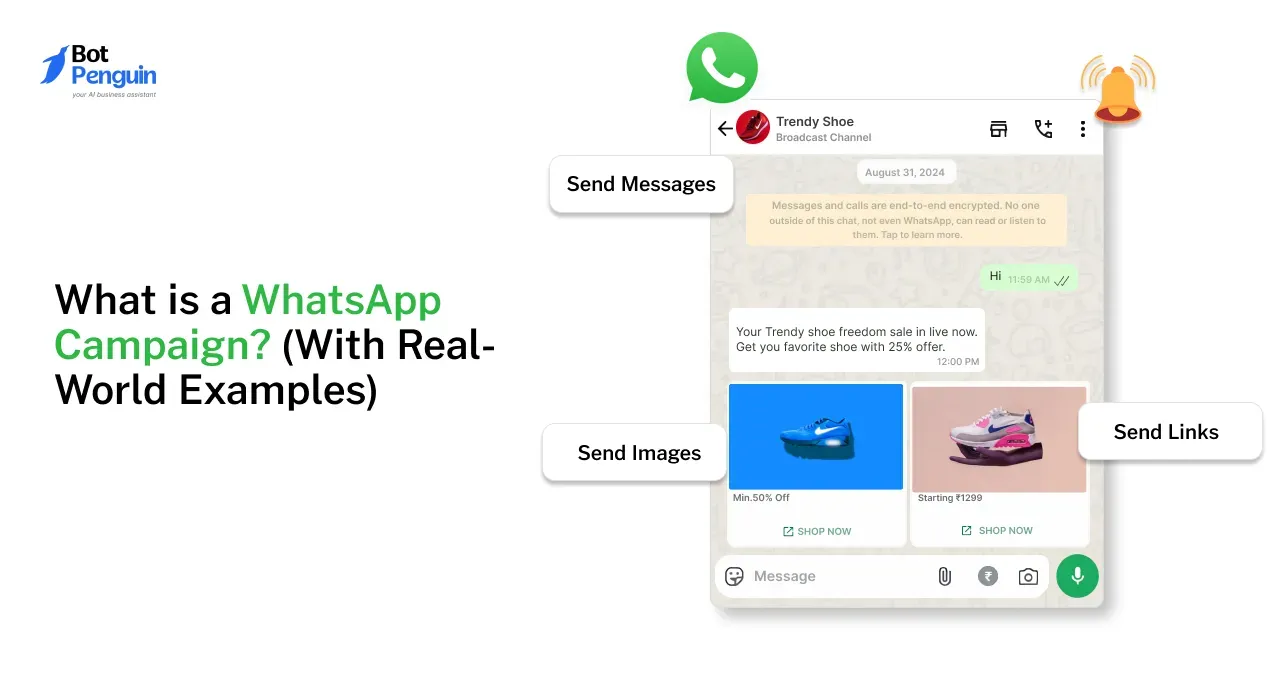Introduction
Email marketing remains a powerful tool for businesses to reach and engage their target audience.
According to a recent study by Statista, the global email marketing market is expected to grow from $7.5 billion in 2020 to $17.9 billion by 2027, at a CAGR of 13.4%.
However, to achieve email marketing success, businesses must follow best practices that cater to the evolving needs and preferences of their subscribers.
One emerging trend that is transforming the email marketing landscape is the integration of HR chatbots, also known as HR helpdesk chatbots or AI chatbots for HR.
These AI-powered assistants can help businesses streamline email marketing workflows, personalize communications, and provide real-time support to subscribers.
By incorporating HR chatbots into their email marketing strategies, organizations can enhance the overall user experience and drive higher engagement and conversion rates.
To truly stand out and achieve measurable success, marketers must adopt a strategic approach, combining creativity with data-driven insights. This blog delves into the top 10 best practices for email marketing success, offering actionable tips and expert advice to enhance your campaigns.
1. Build a Quality Email List
Effective email marketing starts with a strong foundation: a quality email list. Building and maintaining this list is one of the best practices for email marketing.
A targeted list ensures your messages reach the right audience, leading to higher engagement and better results. Let's explore how to create and maintain a quality email list.
Importance of a Targeted List
A targeted list is essential for successful email marketing. It ensures that your emails reach individuals who are genuinely interested in your products or services.
This increases open rates and engagement, making your campaigns more effective.
Methods to Build a List: Opt-ins, Lead Magnets
Utilize opt-ins and lead magnets to grow your list. Opt-ins allow users to subscribe to your emails voluntarily.
Lead magnets, such as eBooks or exclusive discounts, entice potential subscribers. This method is one of the best practices for email marketing.
Regularly Clean Your List
Regularly clean your email list to remove inactive subscribers. This practice improves deliverability and engagement rates.
Keeping your list updated ensures you are reaching an active and interested audience, which is one of the best practices for email marketing.
Email lists go stale faster than most people expect. In a Hunter study, 5.5% of email addresses became unreliable after just 8 weeks, including 2.3% that turned invalid and would have bounced, and 3.2% that became accept-all and increasingly risky to contact.
Even after four weeks, the bounce risk was already above the recommended 2% threshold for cold emails. That is why regularly cleaning and re-verifying your list shortly before sending a campaign is essential to protect deliverability, maintain a strong sender reputation, and reach an active, engaged audience.
2. Personalize Your Emails
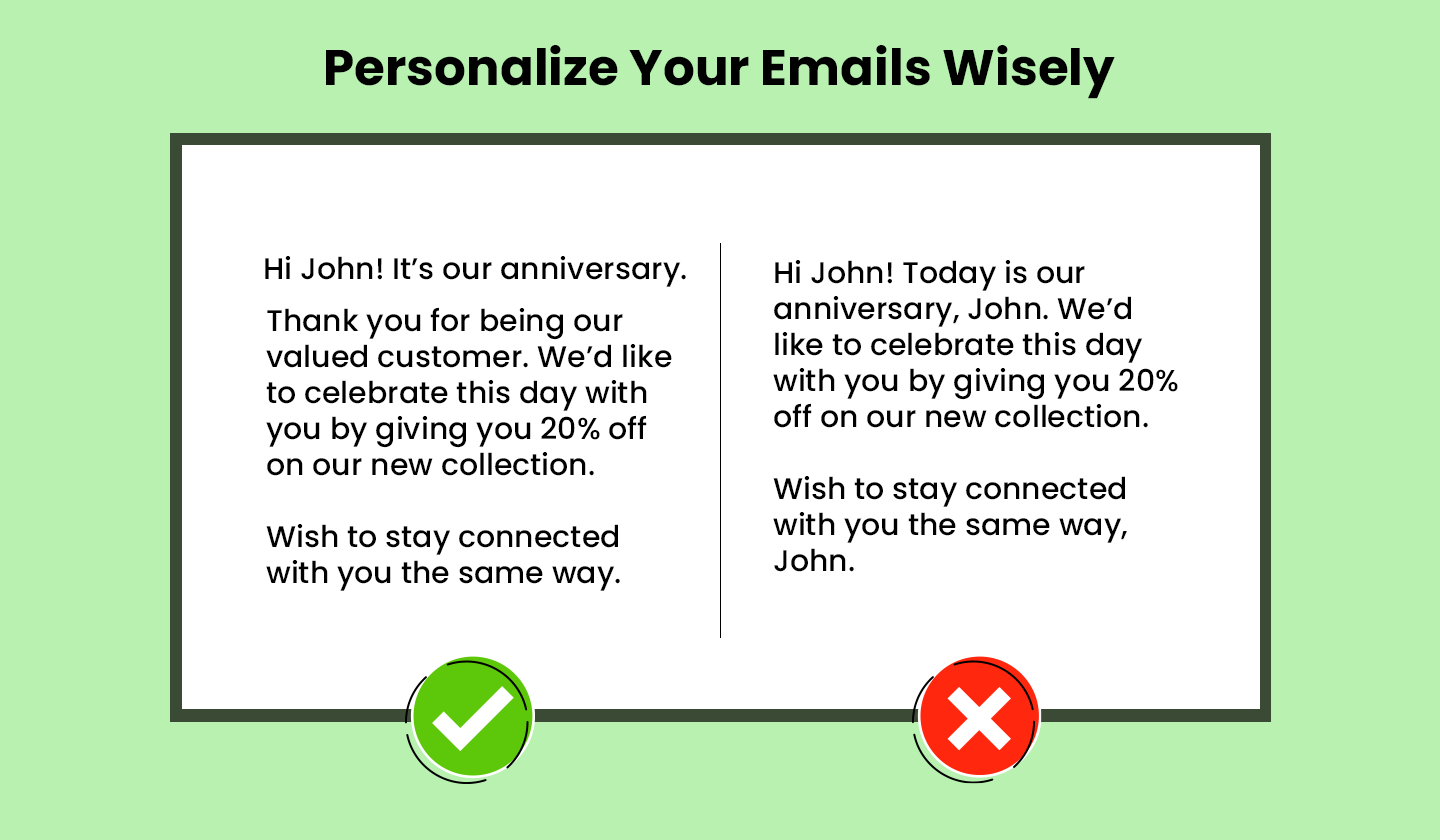
Personalization is one of the best practices for email marketing. It helps to build a connection with your audience, making them feel valued and understood.
By tailoring your emails to individual preferences and behaviors, you can significantly enhance engagement and drive better results. Let's explore the steps to effectively personalize your emails.
Use Recipient's Name
Using the recipient's name in your emails is a simple yet powerful way to add a personal touch. It immediately grabs the reader’s attention and makes the email feel more relevant.
Personalized greetings can significantly improve open rates and foster a sense of familiarity. For example, starting an email with "Hi [Name]" instead of a generic "Hello" can make a big difference in how your message is perceived.
Segment Your Audience
Segmenting your audience allows you to send targeted messages to specific groups. This can be based on demographics, purchase history, or engagement levels.
Segmentation ensures that your emails are relevant and tailored to the interests of each group, aligning with the best practices for email marketing.
Customize Content Based on Preferences and Behavior
Customize your email content based on the recipient’s preferences and behavior. Use data from past interactions to tailor your messages.
Personalized content increases relevance and engagement, adhering to the best practices for email marketing content.
3. Craft Compelling Subject Lines
The subject line is the first thing your recipients see when your email lands in their inbox. Crafting compelling subject lines to ensure your emails get opened and read is one of the best practices for email marketing .
Let's explore the importance of subject lines and how to create effective ones.
Importance of the Subject Line
The subject line is a make-or-break element of your email. It determines whether your email gets opened or ignored.
A compelling subject line grabs attention and entices the recipient to read further. It's essential for achieving high open rates and ensuring your email marketing efforts pay off.
Tips for Creating Effective Subject Lines
To create effective subject lines, keep them short and to the point. Use action-oriented language and create a sense of urgency or curiosity.
Personalize the subject line by including the recipient's name or referencing their past behavior. Avoid spammy words and excessive punctuation, as these can trigger spam filters.
A/B testing different subject lines can help identify what resonates best with your audience, adhering to the best practices for email marketing.
Examples of Successful Subject Lines
Here are some examples of successful subject lines:
- "Exclusive Offer Just for You, [Name]!"
- "Don't Miss Out: Limited Time Only!"
- "Last Chance to Save on Your Favorites!"
- "New Arrivals You'll Love"
- "Unlock Your Special Discount Inside"
These examples illustrate how to create subject lines that are engaging, personalized, and effective.
By focusing on crafting compelling subject lines, you can significantly improve your email open rates and overall campaign success, following the best practices for email marketing content and best practices for B2B email marketing.
4. Provide Valuable Content
Delivering valuable content is at the heart the best practices for email marketing. Your subscribers need to feel that opening your emails is worth their time.
Let's dive into how to provide valuable content in your emails.
Focus on Delivering Value
The primary goal of your email content should be to deliver value to your readers. Focus on addressing their needs, solving their problems, and providing insights or information they can use.
This approach not only keeps your audience engaged but also enhances your credibility and trustworthiness, which is crucial for best practices for email marketing.
Types of Valuable Content: Tips, News, Offers
There are various types of content that can add value to your emails:
- Tips and How-Tos: Share practical advice and actionable steps your audience can implement.
- News and Updates: Keep your subscribers informed about industry news, company updates, or upcoming events.
- Exclusive Offers and Discounts: Provide special deals that are only available to your email subscribers.

Avoiding Overly Promotional Content
While it’s important to include offers and promotions, avoid making your emails overly promotional. Constantly pushing sales can lead to subscriber fatigue and increased unsubscribe rates.
Balance promotional content with informative and educational material to keep your emails interesting and valuable.
This strategy ensures that your email marketing efforts remain effective and adhere to the best practices for email marketing frequency and best practices for B2B email marketing.
5. Optimize for Mobile Devices
Many people access emails on their mobile devices. Ensuring your emails are optimized for mobile is one of the best practices for email marketing.
Let's explore how to optimize your emails for mobile devices.
Importance of Mobile-Friendly Emails
Mobile-friendly emails are crucial because a large portion of users check their emails on smartphones and tablets. If your emails are not optimized for mobile, they can appear distorted or difficult to read, leading to higher unsubscribe rates and lower engagement.
Optimizing for mobile ensures your content is accessible and appealing on any device, which is vital for adhering to the best practices for email marketing.
Responsive Design Tips
To create mobile-friendly emails, use responsive design techniques. This means your email layout should adjust automatically to fit different screen sizes.
Keep your email layout simple with a single-column design. Use large, readable fonts and touch-friendly buttons. Images should be optimized to load quickly without compromising quality.
These responsive design tips align with the best practices for email marketing content, ensuring a seamless user experience.
Testing Emails on Various Devices
Testing your emails on various devices is essential to ensure they look and function as intended. Before sending out your campaign, preview and test your emails on multiple devices and email clients.
This helps you identify and fix any issues that may arise on different screens. Regular testing ensures your emails consistently deliver a positive experience, following the best practices for B2B email marketing and best practices for email marketing frequency.
6. Use Clear Call-to-Actions (CTAs)
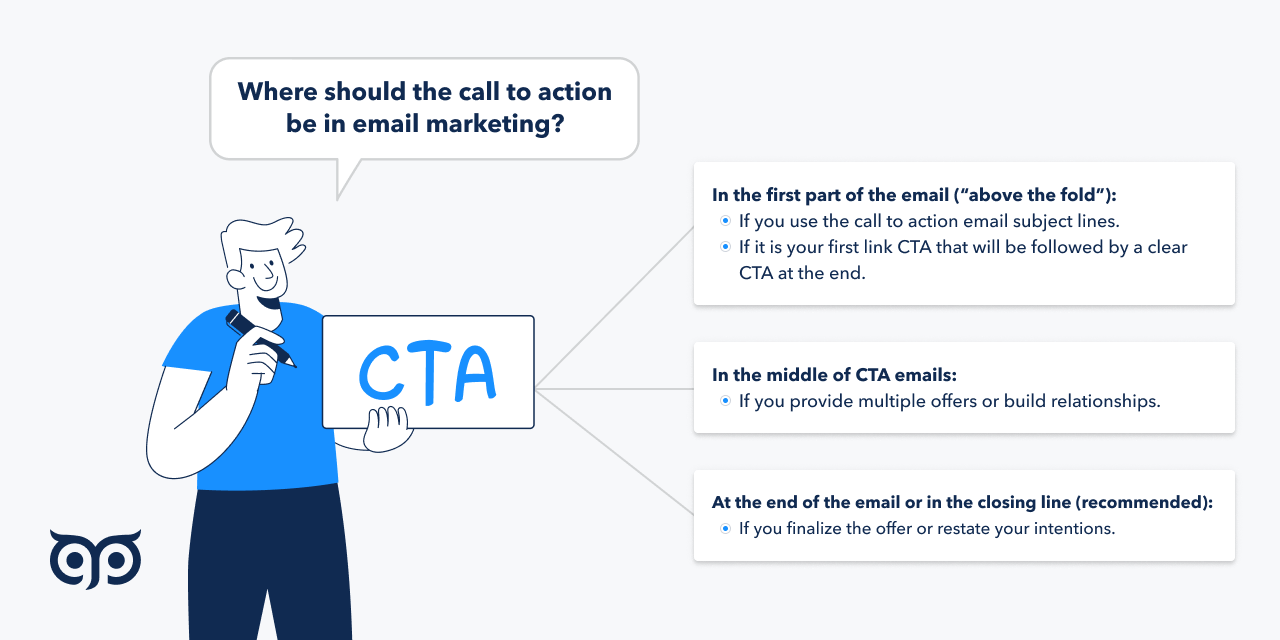
A clear call-to-action (CTA) is for guiding your subscribers toward the desired action is one of the best practices for email marketing.
Whether it's making a purchase, signing up for a webinar, or downloading a resource, a strong CTA can significantly boost your email marketing success. Let’s explore the importance of CTAs and how to design and place them effectively.
Importance of a Strong CTA
A strong CTA is crucial because it directs your readers on what to do next. It transforms passive readers into active participants, increasing engagement and conversions.
Without a clear CTA, your emails may fail to achieve their intended purpose, making it a vital element of the best practices for email marketing.
Designing Effective CTAs
Designing effective CTAs involves using action-oriented language that clearly communicates the benefit of taking the action.
Use verbs like “Download,” “Sign Up,” or “Get Started.” Ensure the CTA stands out by using contrasting colors and making it visually prominent.
The text should be concise and to the point, following the best practices for email marketing content.
Placement of CTAs Within Emails
Placement of CTAs within your email is just as important as the design. Ideally, position your primary CTA above the fold so it’s visible without scrolling.
If your email is longer, include additional CTAs throughout to guide readers. Ensure that each CTA is relevant to the content surrounding it.
Proper placement ensures that your CTA gets noticed and acted upon, adhering to the best practices for B2B email marketing.
7. Test and Optimize
Testing and optimizing your email campaigns is one of the best practices for email marketing. Let’s discuss the importance of A/B testing, what to test, and how to analyze results for optimization.
A/B Testing Importance
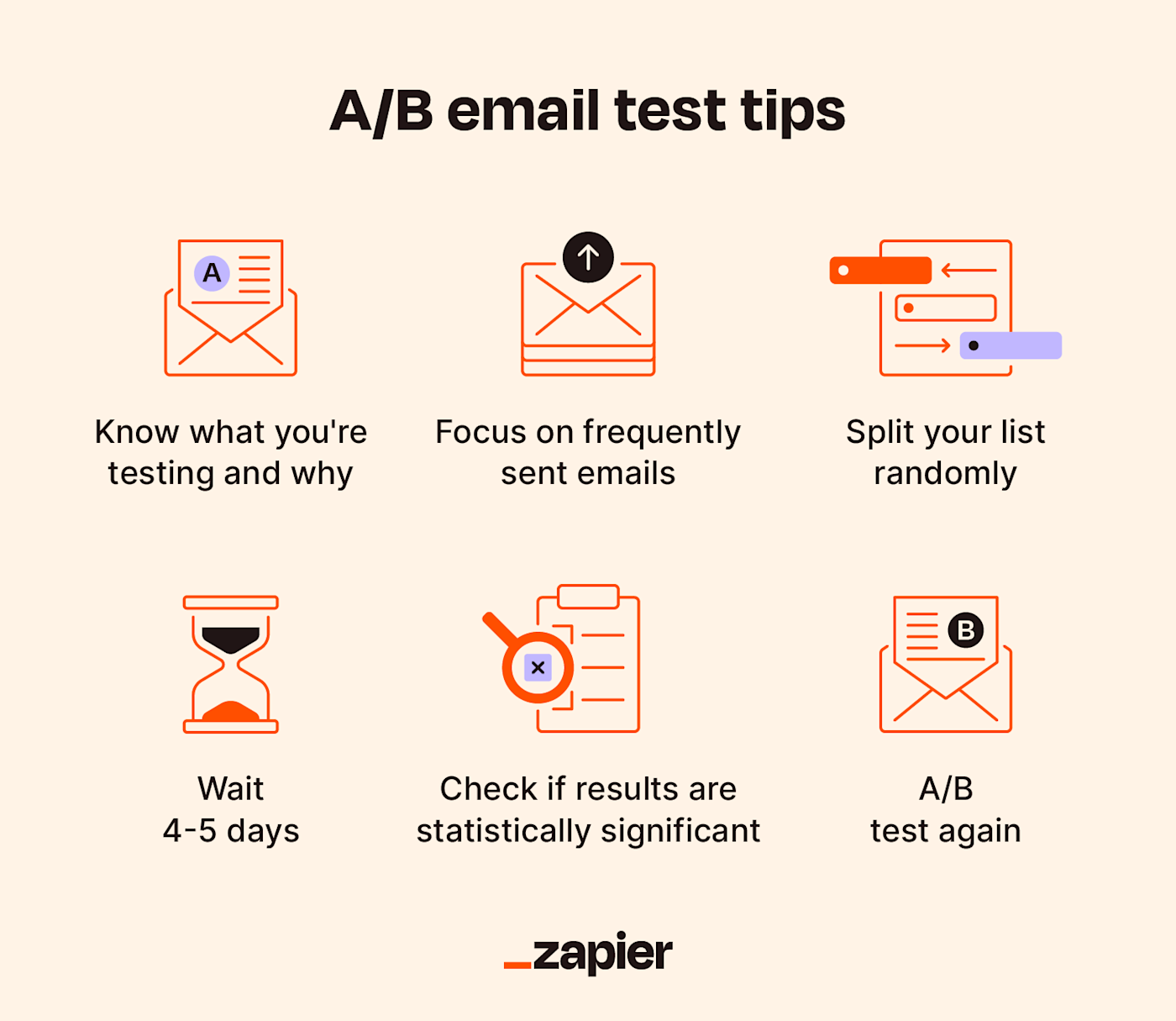
A/B testing, or split testing, involves comparing two versions of an email to see which one performs better. This method is essential for understanding what resonates with your audience.
It helps you make data-driven decisions, ensuring that your emails are aligned with the best practices for email marketing.
What to Test: Subject Lines, Content, Send Times
There are several elements you can test in your emails:
- Subject Lines: Test different subject lines to see which ones have higher open rates. Small changes can make a big difference.
- Content: Experiment with various types of best practices for email marketing content, such as different images, text lengths, and CTA placements, to determine what drives the most engagement.
- Send Times: Test sending your emails at different times and days to identify the optimal best practices for email marketing frequency that maximizes open and click-through rates.
Analyzing Results and Making Improvements
After conducting A/B tests, analyze the results to see which version performed better. Look at metrics like open rates, click-through rates, and conversions. Use these insights to make informed adjustments to your email strategy.
Continuous testing and optimization help you stay aligned with the best practices for B2B email marketing, ensuring your campaigns are as effective as possible.
8. Maintain Consistent Branding

Consistent branding in your email marketing is one of the best practices for email marketing.
Let’s explore why brand consistency is important, tips for maintaining it, and examples of consistent branding in email marketing.
Importance of Brand Consistency
Brand consistency ensures that your audience can easily recognize your emails, which builds trust and familiarity.
When your emails have a consistent look and feel, they reinforce your brand’s identity and help to establish a professional image. This alignment is a crucial aspect of the best practices for email marketing.
Tips for Maintaining Branding in Emails
To maintain consistent branding in your emails:
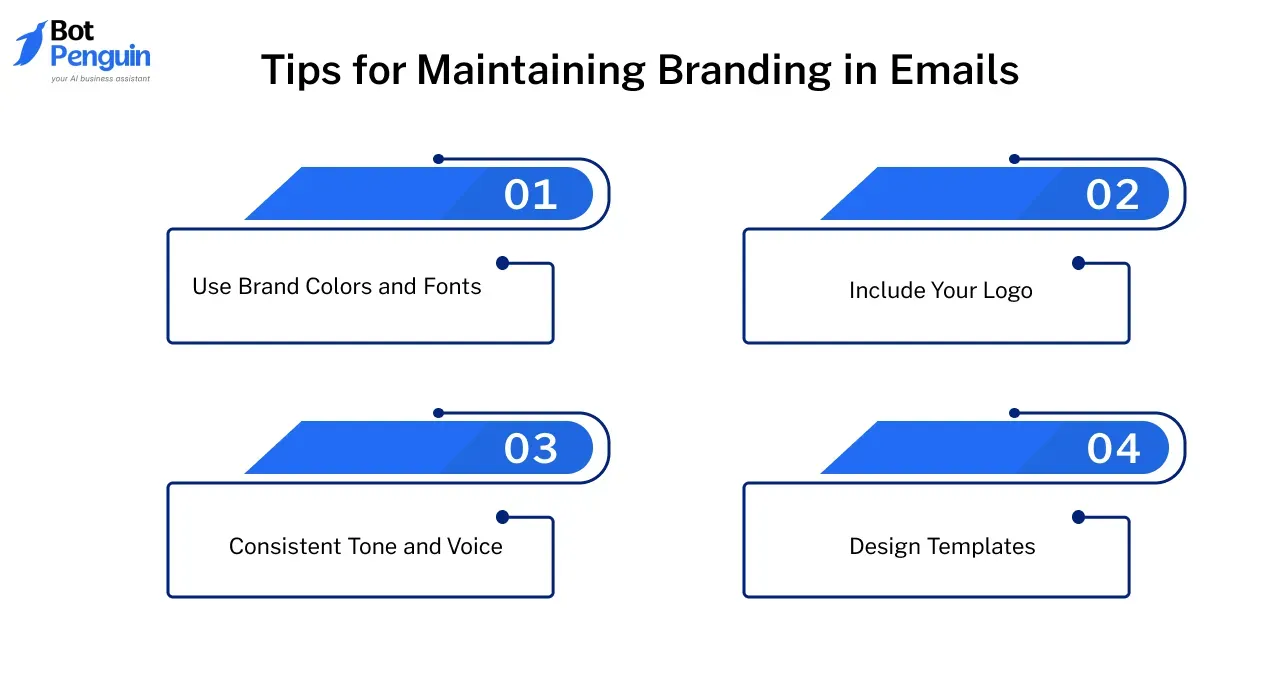
- Use Brand Colors and Fonts: Stick to the colors and fonts that define your brand. This helps in creating a cohesive look.
- Include Your Logo: Place your logo prominently at the top of your emails. This immediately signals to the recipient who the email is from.
- Consistent Tone and Voice: Ensure the language and tone of your emails match your brand’s voice. Whether formal or casual, consistency is key.
- Design Templates: Use email templates that reflect your brand’s design. This saves time and ensures uniformity across all your communications.
These tips align with the best practices for email marketing content by creating a unified and recognizable brand presence.
Examples of Consistent Branding
Examples of consistent branding in emails include:
- Apple: Apple’s emails are minimalistic and clean, using their signature fonts and colors. The tone is always sophisticated and straightforward.
- Nike: Nike’s emails are dynamic and energetic, reflecting their brand ethos. They use bold images and motivational language.
- Starbucks: Starbucks consistently uses their green color palette, logo, and friendly tone, creating a warm and inviting feel.
These brands demonstrate how maintaining consistent branding in email marketing helps reinforce their identity and values, following the best practices for B2B email marketing.
Suggested Reading:
WhatsApp Marketing vs Email Marketing: Which One Works Best?
9. Respect Privacy and Regulations
Respecting privacy and adhering to regulations is one of the best practices for email marketing.
Let’s delve into the importance of compliance, best practices for respecting privacy, and ensuring easy ways for subscribers to unsubscribe.
Importance of Compliance with Laws
Compliance with email marketing laws, such as GDPR and CAN-SPAM, is essential. These regulations protect consumer privacy and outline rules for sending commercial emails.
Adhering to these laws helps avoid hefty fines and legal consequences. It also builds trust with your subscribers, aligning with the best practices for email marketing.
Best Practices for Respecting Privacy
Respecting privacy involves several key practices:
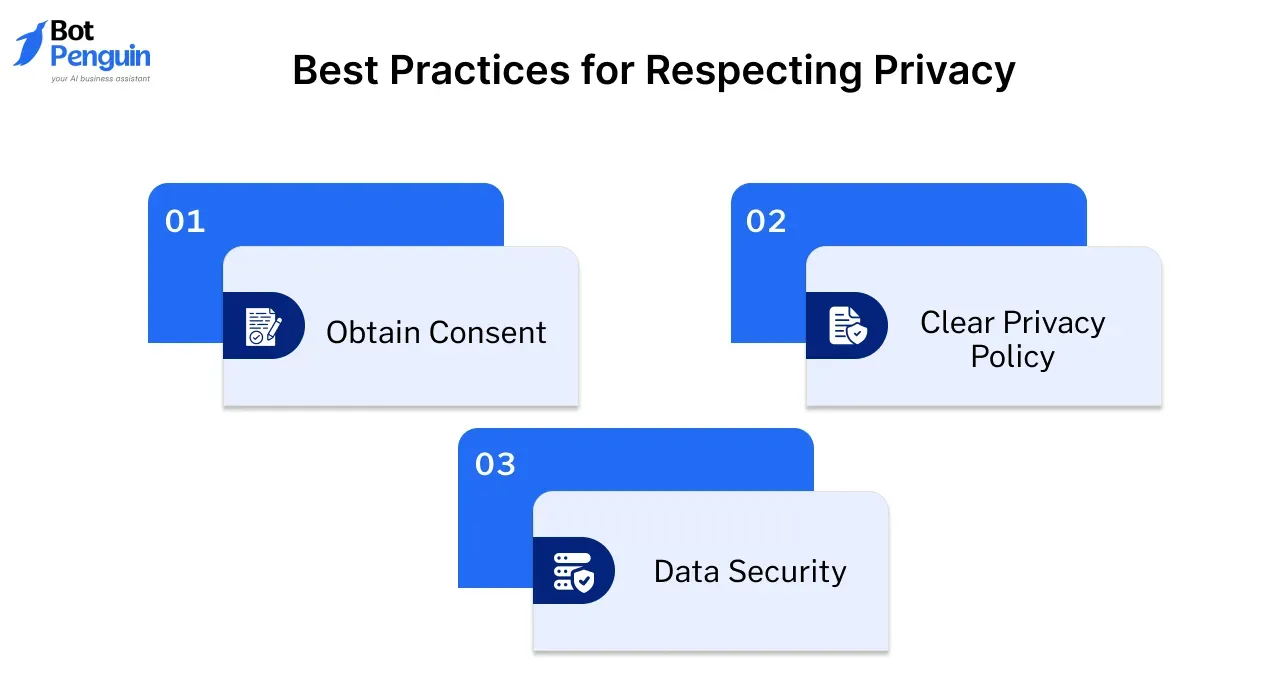
- Obtain Consent: Always get explicit consent before adding someone to your email list. Use double opt-in methods to ensure subscribers genuinely want to receive your emails.
- Clear Privacy Policy: Provide a clear privacy policy explaining how you collect, use, and protect subscriber information. Transparency builds trust.
- Data Security: Implement strong security measures to protect subscriber data from breaches.
These practices ensure that your email marketing efforts comply with regulations and respect subscriber privacy, following the best practices for email marketing content.
Easy Ways to Unsubscribe
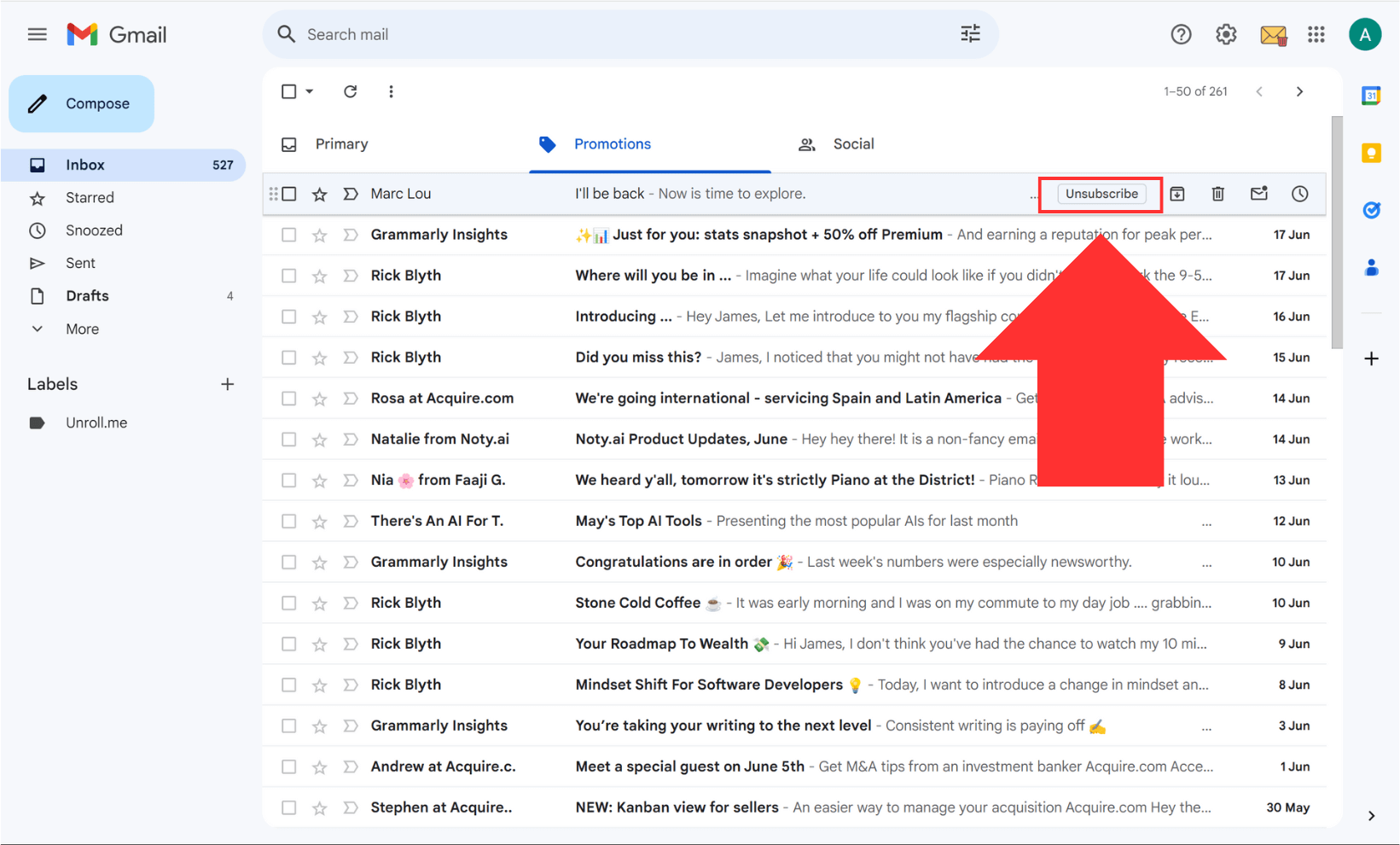
Making it easy for subscribers to unsubscribe is not only a legal requirement but also a best practice. Here’s how to do it:
- Visible Unsubscribe Link: Include a clear and visible unsubscribe link in every email. It should be easy to find and use.
- Simple Process: The unsubscribe process should be simple and quick, requiring minimal steps. Avoid making subscribers log in or fill out lengthy forms.
- Confirmation: Send a confirmation email to inform the subscriber that they have been successfully unsubscribed.
10. Measure and Analyze Performance
Measuring and analyzing the performance of your email campaigns is crucial for continuous improvement.
Let’s explore the essential metrics to track, tools for measurement, and how to use data to enhance future campaigns.
Key Metrics to Track (Open Rates, Click-Through Rates)
Tracking key metrics is vital for understanding the effectiveness of your email campaigns. Important metrics include:
- Open Rates: This indicates the percentage of recipients who opened your email. High open rates suggest that your subject lines and timing are effective.
- Click-Through Rates (CTR): This measures the percentage of recipients who clicked on a link within your email. A high CTR shows that your content and CTAs are engaging.
Tools for Measuring Performance
Several tools can help you measure and analyze your email performance:
- Google Analytics: Track the traffic driven to your website from email campaigns.
- Email Marketing Platforms (e.g., Mailchimp, Constant Contact): These platforms provide detailed metrics and insights, including open rates, CTR, and conversions.
- Customer Relationship Management (CRM) Systems: Integrate your email marketing efforts with your CRM to track the customer journey and sales impact.
Using Data to Improve Future Campaigns
Using data to inform your email strategy is crucial for continuous improvement. Analyze the performance data to identify patterns and trends.
For instance, if you notice higher open rates at certain times, adjust your best practices for email marketing frequency accordingly. Use insights from CTR to refine your content and CTAs.
Conclusion
While these best practices form the foundation of successful email marketing, it's worth noting that emerging technologies like AI chatbots are beginning to play a role in enhancing email strategies.
Although not directly related to email marketing, the rise of HR chatbots and AI chatbots for HR demonstrates how conversational AI can improve communication and engagement.
As these technologies evolve, we may see similar applications in email marketing, potentially offering more personalized and interactive experiences for subscribers.
However, the core principles of email marketing success remain rooted in understanding your audience, delivering value, and respecting subscriber preferences.
By consistently applying these best practices and staying open to innovations, businesses can continue to leverage email as a powerful marketing channel.
Those who adapt their email strategies while maintaining focus on subscriber needs will be best positioned for long-term success.
Frequently Asked Questions (FAQs)
What are the key metrics to track in email marketing?
Track open rates, click-through rates, bounce rates, and conversion rates. These metrics help assess engagement, content effectiveness, and overall campaign success, aligning with the best practices for email marketing.
How do I build a quality email list?
Use opt-ins, lead magnets, and segmentation to create a targeted email list. Regularly clean your list by removing inactive subscribers to maintain high engagement and deliverability.
Why is personalization important in email marketing?
Personalization increases engagement by making emails relevant to the recipient. Use names, segment your audience, and tailor content based on preferences and behavior to improve open and click-through rates.
What makes a compelling subject line?
A compelling subject line is short, action-oriented, and creates a sense of urgency or curiosity. Personalization and A/B testing can help identify the most effective subject lines.
How can I ensure my emails are mobile-friendly?
Use responsive design techniques, simple layouts, and large fonts. Test emails on various devices to ensure they display correctly and maintain usability on smartphones and tablets.
What tools can help measure email marketing performance?
Use tools like Google Analytics, email marketing platforms (e.g., Mailchimp, Constant Contact), and CRM systems to track key metrics and analyze the effectiveness of your campaigns.

